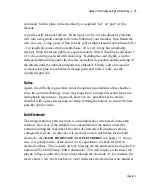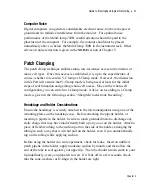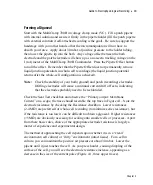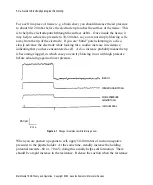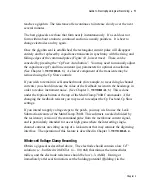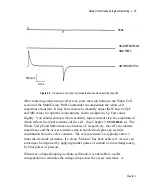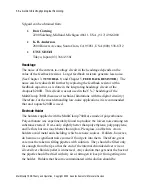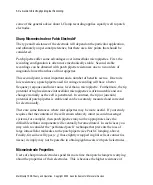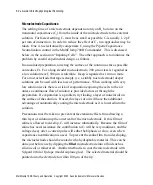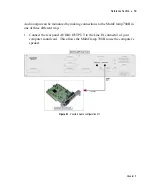
58
•
Guide to Electrophysiological Recording
Sylgard can be obtained from:
•
Dow Corning
2200 Salzburg, Midland, Michigan 48611, USA, (517) 496-6000
•
K. R. Anderson
2800 Bowers Avenue, Santa Clara, CA 95051, USA (800) 538-8712
•
UTSU SHOJI
Tokyo, Japan (03) 3663-5581
Headstage
The noise of the current-to-voltage circuit in the headstage depends on the
value of the feedback resistor. Larger feedback resistors generate less noise.
(See Chapter 3,
TUTORIAL 3
; and Chapter 5,
FEEDBACK RESISTOR
.) The
noise can be reduced still further by replacing the feedback resistor with a
feedback capacitor, as is done in the integrating headstage circuit of the
Axopatch 200B. This circuit was not used in the CV-7 headstage of the
MultiClamp 700B (because of technical limitations with the digital circuitry).
Therefore, for the most demanding low-noise applications it is recommended
that an Axopatch 200B is used.
Electrode Holder
The holders supplied with the MultiClamp 700B are made of polycarbonate.
Polycarbonate was experimentally found to produce the lowest noise among ten
substances tested. It was only slightly better than polyethylene, polypropylene,
and Teflon, but was much better than nylon, Plexiglass, and Delrin. Axon
holders avoid metal and shielding, which are noise sources. Holders, however,
do become a significant noise source if fluid gets into them. Therefore, great
care must be taken in filling pipettes with solution. They should be filled only
far enough from the tip so that the end of the internal chlorided silver wire or
silver/silver chloride pellet is immersed. Any solution that gets near the back of
the pipette should be dried with dry air or nitrogen to keep it from getting into
the holder. Holders that become contaminated with solution should be
MultiClamp 700B Theory and Operation, Copyright 2005 Axon Instruments / Molecular Devices


